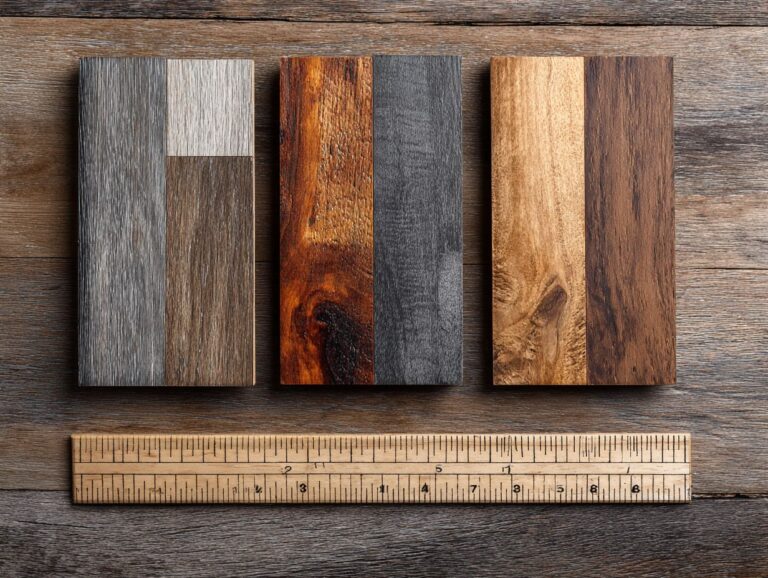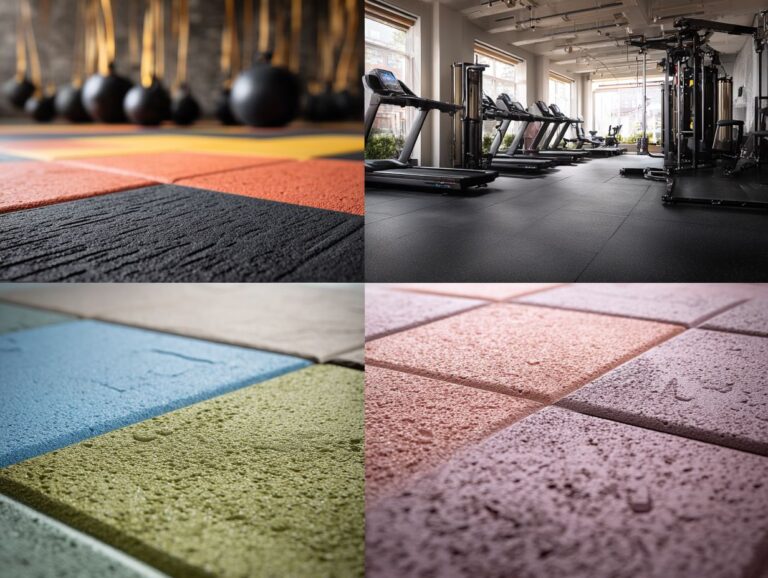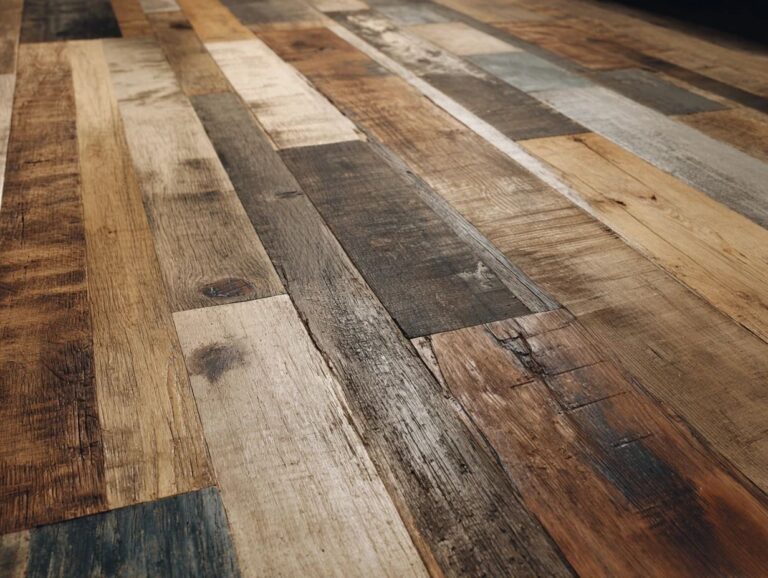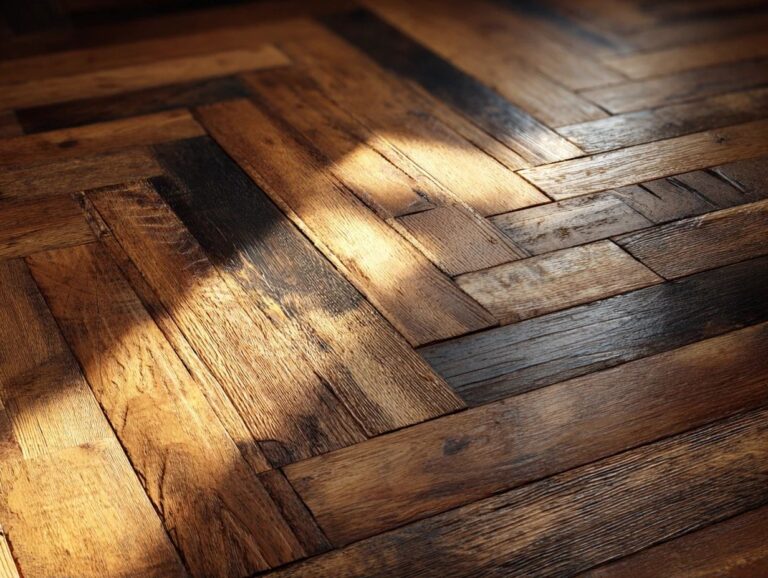Flooring Depreciation Rates – Tax Considerations
Contents
- Introduction to Flooring Depreciation
- Types of Flooring and Their Lifespans
- Understanding Depreciation Rates
- Tax Implications of Flooring Depreciation
- Flooring Depreciation Tax Scenarios
- Calculating Depreciation for Flooring
- Common Mistakes in Flooring Depreciation
- Frequently Asked Questions
- What are flooring depreciation rates?
- What is the purpose of flooring depreciation rates?
- How are flooring depreciation rates calculated?
- Are there different flooring depreciation rates for different types of flooring materials?
- Can flooring depreciation rates be changed over time?
- Are there any tax considerations to keep in mind when replacing flooring?
Introduction to Flooring Depreciation

Key Takeaways:
Definition of Depreciation
Depreciation is spreading the cost of a physical asset over its lifespan according to IRS rules.
For flooring, depreciation allows landlords to recover costs over time, typically using the Modified Accelerated Cost Recovery System (MACRS). In residential rental properties, flooring is usually classified as a 27.5-year property.
To calculate, divide the cost of the flooring by 27.5 to determine the annual depreciation expense. For example, if you install hardwood floors costing $5,500, your annual deduction would be approximately $200.
This deduction lowers taxable income, which helps with cash flow and improves investment returns.
Importance of Depreciation in Taxation
Depreciation can significantly reduce taxable income, allowing landlords to reclaim costs associated with flooring investments through depreciation deductions.
For property managers, the IRS allows different depreciation methods, like the Modified Accelerated Cost Recovery System (MACRS), which enables faster recovery of costs.
For instance, if you invest $10,000 in new flooring, you can write off a portion each year, typically over 27.5 years for residential properties. This means an annual deduction of about $364, effectively reducing your tax burden.
New appliances can be written off right away under Section 179, which might give you bigger tax savings in the first year.
Types of Flooring and Their Lifespans
Different types of flooring have different lifespans and rates of depreciation, which are important for property investors to think about in their investment plans.
Hardwood Flooring
Hardwood flooring usually lasts 30-40 years, which makes it a popular option for property investors due to its long-lasting nature and attractive look.
Hardwood flooring lasts a long time and can greatly increase the value of a property. On average, homes with hardwood floors sell for 2.5% more than those without.
Maintenance costs are relatively low, averaging $1 to $2 per square foot annually for cleaning and refinishing. Regular care, including sweeping and occasional refinishing, can extend its life even further.
When calculating depreciation, hardwood flooring usually retains its value more effectively than other types of flooring, making it a wise option for property owners.
Carpet
Carpet flooring has a shorter lifespan of about 5-15 years, often leading to higher maintenance expenses for landlords managing rental properties.
This limited lifespan impacts depreciation significantly, as carpets tend to lose value quickly. Record the investment in carpet as a capital asset, adjusting its value through regular depreciation entries.
For instance, if a carpet costs $2,000 and you use a straight-line method over 10 years, you would depreciate $200 annually. Frequent cleaning and occasional replacement can raise maintenance costs, affecting overall property expenses.
Landlords should consider high-quality options that may extend longevity, despite the upfront costs.
Tile Flooring
Tile flooring is strong and typically lasts 20-25 years, which makes it a suitable choice for high-traffic areas in rental properties.
Along with durability, tile flooring is relatively low-maintenance, requiring simple cleaning with water and mild detergent. Unlike carpets, they resist stains and odors, which is especially beneficial for landlords.
Tile can slow down the decrease in property value and make the property more appealing, potentially increasing its resale price. For investors, selecting high-quality tiles, such as porcelain or ceramic with a well-known brand, guarantees durability and attracts potential tenants, increasing rental income.
Vinyl Flooring
Vinyl flooring offers a cost-effective option with a lifespan of 10-20 years, appealing to budget-conscious property investors.
Its affordability is a major advantage, typically ranging from $2 to $7 per square foot, including installation. Keeping it clean is easy-just sweep often and mop when needed, suitable for both homes and businesses.
It’s important to consider depreciation; vinyl may not add significant value to your home compared to hardwood or tile. While it’s water-resistant, prolonged exposure can lead to mold issues if not maintained properly. It’s important to manage these factors well for good property management.
Understanding Depreciation Rates

Knowing how depreciation rates work is important for property investors because these rates affect the money they can earn from their properties.
Factors Influencing Depreciation Rates
Different elements affect how quickly a floor loses value. These include the kind of flooring, how often it is used, and the costs for upkeep in homes.
For instance, hardwood floors tend to depreciate slowly due to their durability, while carpet might experience quicker value loss because of wear and stains.
A property heavily used as a short-term rental may see accelerated depreciation compared to a primary residence, where usage is moderate.
Regular maintenance-like refinishing floors or repairing fixtures-can mitigate depreciation, keeping the property’s value steadier.
By closely monitoring these aspects, homeowners can better understand and manage overall depreciation rates.
Common Depreciation Methods
The most common depreciation methods include straight-line and declining balance, both of which are recognized under IRS regulations.
The straight-line method divides the asset’s cost evenly over its useful life. For example, if you purchase a rental property for $300,000, with a useful life of 27.5 years, you would deduct approximately $10,909 annually.
In contrast, the declining balance method accelerates deductions, allowing larger amounts in earlier years. For instance, using a 200% declining balance on the same property means you would first deduct $21,818 in year one.
Knowing both methods helps you get the most tax benefits suited to your financial goals.
Accelerated vs. Straight-Line Depreciation
Accelerated depreciation allows for a higher deduction in the earlier years of an asset’s useful life compared to straight-line depreciation, potentially benefiting cash flow.
For example, consider a piece of machinery costing $10,000 with a useful life of 10 years. Using straight-line depreciation, you’d deduct $1,000 annually.
In contrast, using the double declining balance method-an example of accelerated depreciation-you might deduct $2,000 in the first year, $1,600 in the second, and so forth. While this results in larger deductions upfront, it reduces tax burden sooner.
This strategy is particularly advantageous for businesses anticipating high initial expenses, allowing them to reinvest savings into growth more rapidly.
Tax Implications of Flooring Depreciation
The decrease in value of floors impacts taxes, affecting cash flow and profits for those who invest in property.
Flooring Depreciation Tax Scenarios
Flooring Depreciation Tax Scenarios
Depreciation Methods by Flooring Type: Carpet
Depreciation Methods by Flooring Type: Hardwood
Depreciation Methods by Flooring Type: Other Flooring Types (Vinyl, Laminate, Tile, Stone)

The Flooring Depreciation Tax Scenarios provide a detailed analysis of how different flooring types are depreciated for tax purposes. Knowing these situations can help property owners and investors choose wisely about flooring expenses, which can result in improved tax advantages over time.
Depreciation Methods by Flooring Type show distinct differences in the depreciation periods and annual depreciation values across various flooring options. For Carpet, the depreciation period is relatively short at 5 years. This means that if you invest $3000 in carpet, you can expect an annual depreciation expense of $600. This translates to a 20% depreciation rate per year, allowing for a rapid recovery of investment value through tax deductions.
- Hardwood: In contrast, Hardwood flooring has a significantly longer depreciation period of 27.5 years, aligning it more closely with the depreciation timeline of the overall building structure. With an initial investment of $12000, the annual depreciation is $436.36, which accounts for 1.58% of the investment being depreciated annually. This slower depreciation means hardwood is considered a long-term asset, reflecting both its durability and lasting value.
- Other Flooring Types: Flooring types such as vinyl, laminate, tile, and stone are also depreciated over 27.5 years, similar to hardwood. Their annual depreciation percentage is likewise 1.58%. These materials are usually strong and long-lasting, so they have a depreciation period similar to that of building structures.
In summary, the choice of flooring can significantly impact tax scenarios through depreciation. Carpet offers quicker tax benefits but requires more frequent replacement. In contrast, hardwood and other durable materials provide long-term tax deductions aligned with a longer lifespan. Checking how upfront costs, long-lasting quality, and tax benefits affect flooring options is important for making the best choices in property management and investment plans.
Impact on Business Taxes
Properly accounting for flooring depreciation can significantly lower a landlord’s business taxes by maximizing rental income deductions.
For instance, using the Modified Accelerated Cost Recovery System (MACRS), a landlord can depreciate flooring over 39 years. If the total cost of the flooring installation was $15,000, the annual depreciation deduction would be approximately $384. This lowers taxable income substantially.
If the property generates $30,000 in rental income, the taxable income could effectively reduce to $29,616 after accounting for the flooring deduction.
Landlords can increase their cash flow and get more tax deductions by carefully scheduling renovations within the tax year.
Capital vs. Expense Deductions
Knowing the difference between capital expenses and expense deductions is important for correct tax reporting and getting the most benefits according to IRS rules.
Capital expenses involve spending money on flooring that increases your property’s worth, like hardwood or tile installations. These costs can usually be written off over 27.5 years for residential properties.
In contrast, expense deductions apply to repairs or maintenance, like replacing a few tiles or minor refurbishments, which can be deducted in the year incurred.
For effective tax strategy, consider the timing of expenditures; if you anticipate a profitable year, capitalizing on deductions can reduce your taxable income significantly.
Calculating Depreciation for Flooring
Figuring out how much flooring loses value over time can bring important financial advantages to property investors.
Step-by-Step Calculation Process
Calculating flooring depreciation involves five simple steps that help meet rules and get the most deductions.
- First, determine the total cost of the flooring, including installation.
- Next, identify the useful life expectancy of the flooring type-typically 15 years for carpet, 39 years for hardwood.
- After that, apply the straight-line depreciation method; divide the total cost by the useful life to find the annual depreciation expense.
- Be sure to fill out IRS Form 4562 for reporting.
- Check your deductions each year to keep correct records.
This method simplifies the process and helps you maximize your tax benefits.
Using IRS Guidelines
It’s important to follow IRS rules to correctly calculate flooring depreciation and qualify for tax deductions.
To effectively apply these guidelines, begin by determining the appropriate depreciation method-typically the Modified Accelerated Cost Recovery System (MACRS) for commercial properties.
For example, a business can depreciate a carpet at 15 years, while tile flooring may be depreciated over 39 years. Be sure to maintain detailed records of flooring costs, including installation and materials, as the IRS allows depreciation deductions based on these figures.
Use IRS Form 4562 to report, following IRS sections like 168 and 274 to know your responsibilities.
Common Mistakes in Flooring Depreciation
It’s important to prevent usual errors in flooring depreciation to stay compliant and make the most of tax advantages for those investing in real estate.
Misclassification of Flooring Types
Misclassifying flooring types can lead to incorrect depreciation rates, increasing the risk of audits or penalties from the IRS.
For instance, classifying luxury vinyl as commercial rather than residential can shorten the depreciation timeline, impacting tax obligations significantly.
To avoid this pitfall, familiarize yourself with IRS guidelines, specifically the distinctions between residential and commercial property classifications.
Getting help from a tax expert or using software like QuickBooks can make sorting categories easier.
Maintaining thorough records and receipts, along with exact descriptions of your flooring types, will help you follow rules and avoid expensive errors.
Incorrect Lifespan Estimates

Incorrectly estimating the lifespan of flooring can result in improper depreciation calculations, affecting financial management and tax reporting.
To determine how long materials will last, look at their quality. Hardwood generally lasts 25-30 years, while laminate typically lasts 15-20 years.
Use tools like the Flooring Longevity Calculator, which allows you to input specific conditions to forecast durability. Write down when you installed things and any maintenance done. This will help with checks later.
Hiring a professional for an evaluation can help determine how long something might last, considering environmental conditions. These methods produce accurate depreciation reports and better management of financial issues.
Summary of Key Points
The main aspects of flooring depreciation are knowing different flooring types, figuring out depreciation rates, and being aware of tax effects.
To evaluate flooring depreciation correctly, first identify the type of flooring-hardwood, laminate, or carpet-since each has a different lifespan. For instance, hardwood typically lasts 20-25 years, whereas carpet may only last 5-15 years.
Use the straight-line depreciation method for simplicity: subtract the salvage value from the purchase price, then divide by the useful life. Consult IRS guidelines to understand how these depreciations impact your taxes.
By keeping detailed records of installation expenses, upkeep, and modifications, you can manage tax matters.
Final Thoughts on Tax Considerations
Thinking carefully about how flooring loses value over time can bring big money savings and meet tax rules.
Knowing the depreciation timelines for various flooring materials can improve your financial planning. For example, using the Modified Accelerated Cost Recovery System (MACRS), you can depreciate hardwood floors over 39 years and carpet over 5 years.
Utilizing software like QuickBooks can simplify tracking depreciation expenses. Talk to a tax expert to follow the rules and get the most deductions.
Revisiting your flooring choices and their depreciation timelines can significantly impact your cash flow, allowing for better investment decisions and effective property management.
Frequently Asked Questions
What are flooring depreciation rates?
Flooring depreciation rates refer to the percentage of value that can be deducted from a property’s taxes over a specific period of time. This is done to account for the gradual wear and tear of flooring materials over time.
What is the purpose of flooring depreciation rates?
The purpose of flooring depreciation rates is to provide tax benefits for property owners by accounting for the decrease in value of flooring materials over time. This helps to reduce the overall tax burden for property owners.
How are flooring depreciation rates calculated?
Flooring depreciation rates are calculated using the cost of the flooring material, the expected useful life of the material, and the applicable depreciation method, such as straight-line or accelerated. The resulting percentage is then used to determine the deductible amount for each tax year.
Are there different flooring depreciation rates for different types of flooring materials?
Yes, different types of flooring materials have different depreciation rates. For example, carpet may have a shorter useful life and therefore a higher depreciation rate compared to hardwood flooring. It is important to consult with a tax professional to determine the correct depreciation rate for your specific flooring materials.
Can flooring depreciation rates be changed over time?
Yes, flooring depreciation rates can be updated or changed if the property undergoes major renovations or improvements that affect the value of the flooring materials. In this case, the new depreciation rate will be applied to the remaining useful life of the flooring.
Are there any tax considerations to keep in mind when replacing flooring?
Yes, it is important to consider the impact of flooring depreciation rates when replacing flooring. The remaining depreciation value of the old flooring must be taken into account, and the new flooring will have its own depreciation rate. You should talk to a tax expert before you make any big flooring changes.





